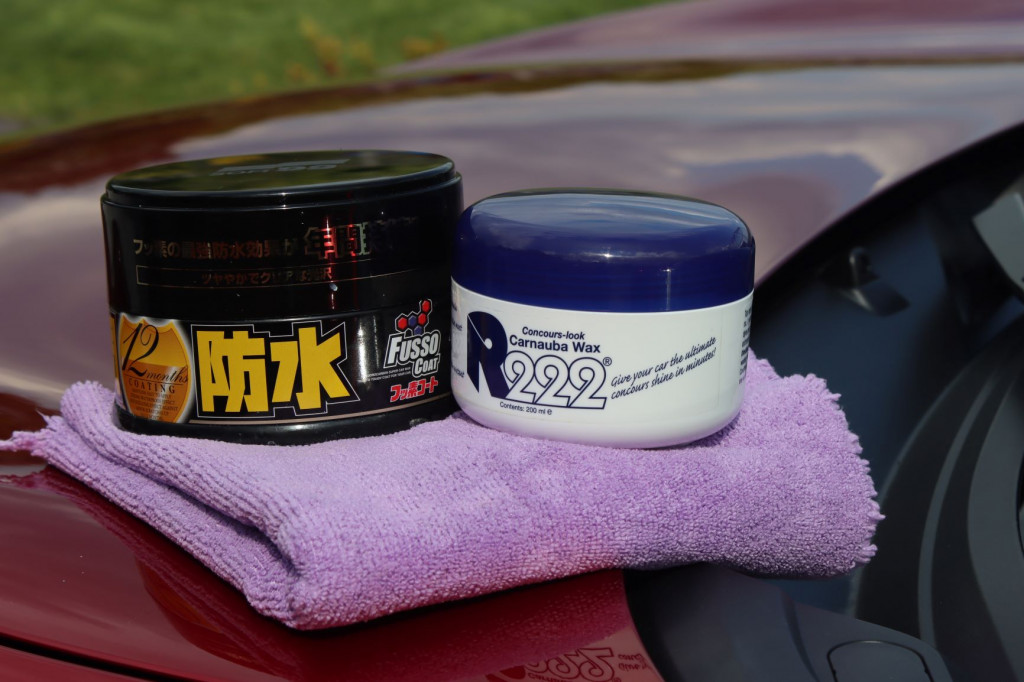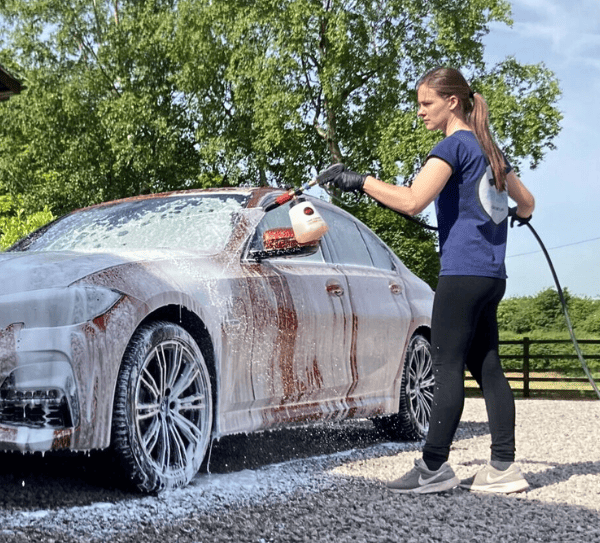Ever wondered why your car gets covered in dust really quickly after you’ve just waxed it? It can be really annoying, and it seems to happen pretty much every time.
In this article, I’ll explain why car wax seemingly attracts dust, and what you can do to fix it. So let’s get started.
The Quick Answer
A freshly waxed car usually attracts dust because static electricity builds up when you buff the wax off. Some waxes, like natural Carnuaba waxes are more prone to sticking to dust than sealants and ceramic coatings. Spray sealants are the most dust-repellent because you don’t need to buff them off after applying.
It’s Mostly in The Application
The main reason why a freshly waxed car becomes a magnet for annoying dust particles, is due to the application process.
So when you apply wax, you layer it evenly onto the paintwork. Let it cure (dry), and then buff it off using a microfiber towel.
It’s this process of buffing the paintwork that causes the issue.
Essentially, without getting into the physics it causes static energy to build up. This static energy is what attracts dust.
So no, you’re not going insane.
A freshly waxed car can attract dust at a faster rate a which a car that was waxed a few weeks ago does. The good new is though, that once you’ve washed the car and dried it again, the wax won’t attract dust quite as much.
Are Some Waxes Worse Than Others?
Okay, so the application process producing the static electricity is the main culprit for attracting dust to a freshly waxed car, but does the wax itself matter?
Yes, to an extent, some waxes attract more dust than others.
Again, the application can make a difference. If you’re using a wax that buffs off really easily with minimal effort, then the static build up won’t be as significant. So it won’t attract as much dust.
But if you’re using a wax that cures really hard and quickly, and is a bit of a nightmare to remove, then you’ll get more build up of static, and hence attract more dust.
The finish the wax leaves on the paintwork can also make a difference.
Some waxes produce a slicker surface than others, meaning that the paint will feel smoother, and not as “grabby”.
Natural high-content Carnauba waxes tend to be the worst culprits at attracting wax. This is because they leave more oils on the surface which grab onto dust particles more easily.

Which Waxes are Best at Repelling Dust?
So I’ve already mentioned that natural Carnauba waxes are usually the most likely to attract dust. And waxes that are a pain to remove which cause static build up on application. But are there any waxes that can actually repel dust?
There are a few waxes that claim anti-static properties, but how much of a difference this makes is quite negligible. Personally, I don’t think that these “dust-repellent wax” claims measure up to much.
Generally, I’ve found that waxes and sealants which create a very slick surface and are easy to remove are the best to go for.
However, if you’re looking for something a bit different that attracts noticeably less dust, then you should look into spray-sealants.
Looking for some of the best paint protection products on the market? Make sure you check out my recommended products page for all my current top picks.
Spray Sealants Are Less Likely to Attract Dust
So what actually are spray sealants. Well, they are really simple and quick to use, and they don’t require any buffing whatsoever (reducing the static build up, and the risk of inflicting swirls and scratches).
You simply apply them after washing and rinsing, to wet paintwork. They are sprayed on the panel then immediately rinsed off with a pressure washer.
They leave a hydrophobic coating on the surface and then you just dry the car as normal. It’s that simple!
I use a spray sealant called GYEON Wetcoat, which produces a really slick and hydrophobic finish.
I’ve also found that far less dust ends up on the paintwork between washes compared to when I’ve been using traditional waxes.
How Can I Remove Dust Safely?
It can be really tempting to use a quick detailer and a microfiber towel between washes to remove light dusting. I mean who wants to do a full wash a couple of days after waxing to remove a bit of dust, right?
However, I’d strongly recommend not doing this. The best way to safely remove dust is by washing the car using a microfiber wash mitt. This is the least likely method to inflict clear coat scratches and swirls.
If you use a quick detailer, you run a very high risk of causing scratches. Take a look at this article I’ve written about when and how to use a quick detailer spray to learn more about this topic.
The next best alternative to washing, is to use a waterless wash product. However, if you want the safest option, then just give your car another full wash.
If you have a very hydrophobic coating on your car, then you can just rinse the car down and then drive it to dry it off. This usually removes some of the dust, but it’s not always that effective.
Never just rinse your car and dry it with a microfiber towel though. It won’t provide enough lubrication and runs the high risk of scratching the paintwork.
Don’t forget that dust is made up of solid particles. Although they are small, they cover the entire car. So rubbing dust into the paintwork, without lubrication (car shampoo and water), is essentially the same as rubbing grit into the paint.
Thanks for reading! I hope you’ve found this article helpful. Don’t forget to check out the rest of the website to learn more about making your car look its best!

